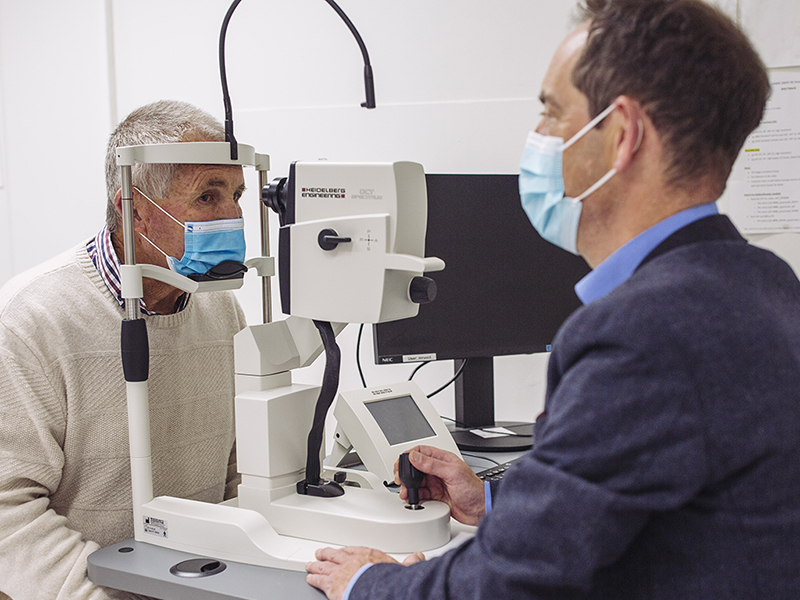This website uses cookies so that we can provide you with the best user experience possible. Cookie information is stored in your browser and performs functions such as recognising you when you return to our website and helping our team to understand which sections of the website you find most interesting and useful.
Stories
Peter’s vision to beat glaucoma
Peter Pitman hopes today’s research will plant the seed for better glaucoma treatments in the future.
A green thumb and good vision served Peter Pitman well as a horticulturalist and garden designer.
Now in his 70s, Peter loves nothing more than being outdoors and tending to plants, often with his beloved wife Joan by his side.
Roses remain a firm favourite of Peter’s, and good eyesight is essential to successful pruning that will keep them in full bloom.
“You need to know where you’re cutting,” Peter says.
“You don’t want to leave any dead wood, so you need to cut it right on the notch.’’
Staying healthy
A commitment to health and fitness from an early age – including a stint as a VFL umpire – enabled Peter to keep doing what he loves.
“I think we take our natural health for granted,’’ he says.
Peter didn’t experience any health or vision problems until his 60s, when he required urgent surgery on a detached retina.
A couple of years later he was diagnosed with glaucoma when a routine eye check found very high pressure in his left eye.
Losing sight
Glaucoma occurs when the optic nerve, which carries visual information between the eye and brain, is damaged.
The most common cause is too much fluid pressure inside the eye, which builds up over time and causes injury.
Glaucoma is often called the ‘silent thief of sight’ because many people don’t notice the early loss of peripheral vision, and by the time they experience symptoms, irreversible damage has occurred.
Peter considers himself lucky the disease was picked up early, but after a lifetime of good health, he was not used to taking regular eye drops to keep it in check.
That’s why he jumped at the chance to take part in a clinical trial at CERA investigating a potential new treatment.
“I wasn’t sure the research would be able to help me – but I thought it might make a difference to someone in the future,’’ says Peter.

Clinical research
The trial, led by CERA Managing Director and glaucoma researcher Professor Keith Martin, is just one of many projects investigating the causes and potential new therapies for glaucoma at CERA.
Professor Martin says people living with glaucoma, such as Peter, play a vital role in eye research.
“We are truly grateful for their time and the enormous trust they place in our teams by trialling new treatments or taking part in other clinical research, including natural history studies, which track the progress of disease.’’
Professor Martin is also leading pre‑clinical research to develop a gene therapy for glaucoma and collaborating with Dr Flora Hui to test the ability of vitamin B3 (nicotinamide) to protect the optic nerve from damage.
Professor Martin says the combination of lab-based and clinical scientists gives CERA a unique ability to conduct research that makes a real difference.
He says boosting clinical trials at CERA over the next few years will be a key priority to give more people with eye diseases access to cutting-edge, new treatments.
Supporting research
Peter Pitman is grateful to have taken part in the clinical trial and appreciates the care shown to him by Professor Martin and the Clinical Trial Research Centre team.
He says the experience has given him a new-found appreciation of scientific research and his sight.
“You don’t think about how important your sight is until there’s a chance you won’t have it.’’
Join us to grow our understanding of glaucoma
Every donation enables us to test new ideas, treatments and approaches to eye health.
Will you join us in our annual Glaucoma Appeal?

